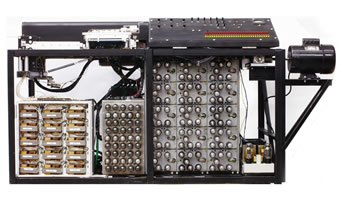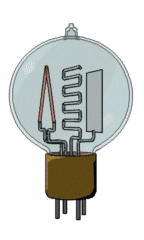
With the groundwork laid by people such as Pascal, Babbage, and Hollerith, innovators began working toward modern computers. It was during the early 20th century that computers changed from mechanical calculation machines to electronic computers.
What was the first programmable computer?
In 1941, Konrad Zuse built the first programmable computer called the Z3. A computer is "programmable" because it is capable of following instructions. The Z3 was the first computer designed to solve complex engineering equations, rather than basic arithmetic problems.

The Z3
What was the first electronic computer?
In 1942, John Atanasoff and Clifford Berry completed the first all-electronic computer, called the ABC (Atanasoff-Berry Computer). The ABC was the first computer to use electricity—in the form of vacuum tubes—to help make electric computation possible. The ABC was used for solving complex systems of equations.

Atanasoff-Berry Computer
Vacuum tubes look similar to light bulbs. Vacuum tubes were the first major electrical part of a computer, replacing manual switches. After the introduction of the vacuum tube, there were no longer problems with mechanical gears, pulleys, or levers. Vacuum tubes marked the end of mechanical computing and the beginning of electronics in computers.

What was the first electromechanical calculator?
Built by Professor Howard Aiken and IBM in 1944, "Mark 1" was the first electromechanical calculator. Mark 1 strung together 78 adding machines to achieve three calculations each second—a computing marvel for its day. It was 8 feet high and 55 feet long. Ironically, today’s average pocket calculator is "smarter" than the Mark 1.

The Harvard "Mark 1"
What was the first electronic digital computer?
In 1945, Presper Eckert and John Mauchly developed the first operational electronic digital computer, called ENIAC, for the U.S. Army. ENIAC was over 1000 times faster than Mark 1, and could perform 5,000 additions per second.

The ENIAC
ENIAC had more than 18,000 vacuum tubes, 7,000 transistors, and took up to 1,800 square feet of space. In addition, the electrical current ENIAC required could power more than a thousand modern computers. Today, ENIAC’s technology could fit in a modern wristwatch.
